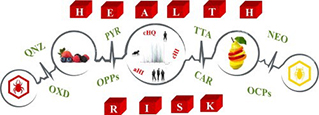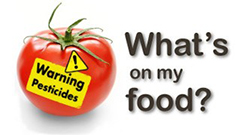New Products Manufacturers, custom Rapid Test For Agricultural Products Home>>Rapid Test for Agricultural Products
Application
Contact Us

Rapid Test for Agricultural Products
Sep. 19, 2017
Creative Diagnostics® offers innovative, real time, field and lab based colloidal gold rapid tests for qualitatively detecting pesticide residues in agricultural products.
Pesticide Residues Rapid Test
● Fast and easy to use
● No other equipment necessary
● Sturdy and high quality test cards
Pesticide residues
| Pesticide residue refers to the pesticides that may remain on or in food after they are applied to food crops. Pesticide | |
| can be magnified through the food chain and have been detected in products ranging from meat, poultry, and fish, to vegetable oils, nuts, and various fruits and vegetables. Pesticides include organochlorinated pesticides (OCPs), pyrethroid pesticides (PYRs), organophosphorus pesticides (OPPs), triazines, carbamates, benzoylureas, quinoxalines and other pesticides. |  |
● Organochlorine pesticides (OCPs), effective against a variety of insects, were widely used worldwide in agriculture and animal production until restrictions were introduced by developed countries in the late 1970s. European regulation establishing pesticide residue levels in food has prompted EU members to monitor OCPs.
● Synthetic pyrethroid pesticides (PYRs) are effective broad-spectrum insecticides with low mammalian toxicity and short-term environmental persistence. Owing to their metabolism in animals, they tend to bioaccumulate in lipid compartments, becoming a potential source of human exposure through foodstuffs.
● Organophosphorus pesticides (OPPs), mainly used as insecticides, are esters of phosphoric acid with different substituents. Since these substances act through inhibition of acetyl-cholinesterase, they also represent a risk to human health.
● Carbamate pesticides (CBs), or N-substituted carbamic acid esters (RO–C(O)–NR’R’’), are used for broad-spectrum insect control around the world. Exposure to carbamate pesticides, acting as acetyl-cholinesterase inhibitors, can lead to reversible neurologic disorders.
● Triazines (TRZs) are among the most widely used herbicides in agriculture. These herbicides are suspected of causing cancers, birth defects, and disruption of hormone function.
Over 1000 pesticides have been in use over the last century and new pesticides are being developed. According to the incomplete statistics, the application amount of organophosphorus pesticides (OPPs) and carbamate pesticides (CMs) accounts for about 70% of the total application amount of pesticides. It is significant to ensure that the pesticides in fruits and vegetables had been completely degraded before the sale of agricultural products. So, fast, sensitive and cost-effective analysis of pesticide residues is essential to assure the quality of agricultural products.
| The use of pesticides, to some extent, promoted the development of agricultural productivity, but on the other hand, it also brought series of negative effects, causing acute and chronic poisoning. The use of pesticides is strictly | |
| controlled in the United States. The FDA and other government agencies set limits on how much of a pesticide residue can remain on agricultural product because pesticide residues in food are hazardous to our health. Creative Diagnostics offers rapid test kits to screen samples for carbendazim, acetamiprid and other pesticide residues to ensure the safety of our food supply, which is much cheaper than the conventional testing technique. |  |